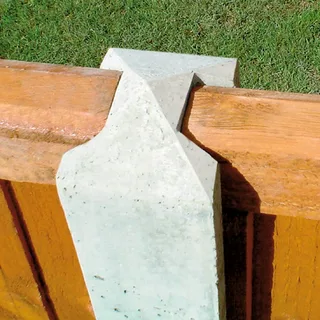When it comes to building a fence that stands the test of time, choosing the right fence post material is crucial. Whether you’re installing a fence for privacy, security, or decoration, the posts serve as the foundation of the entire structure. In The Ultimate Guide to Fence Post Materials, we’ll explore the most popular options, their pros and cons, and what to consider when making your choice.
Why Fence Post Material Matters
Fence posts are more than just vertical supports. They determine the strength, durability, and maintenance needs of your fence. A poor choice of material can lead to premature leaning, rotting, or even collapse. That’s why understanding your options is key.
Common Types of Fence Post Materials
1. Wood Fence Posts
Wood is one of the most traditional and affordable options for fence posts.
Pros:
- Cost-effective
- Easy to install
- Aesthetic appeal for rustic or classic styles
Cons:
- Prone to rot and insect damage
- Requires regular maintenance
2. Metal Fence Posts
Metal posts, typically made from steel or aluminum, are favored for their strength.
Pros:
- Highly durable
- Weather-resistant
- Low maintenance
Cons:
- More expensive than wood
- Can clash with the design of wood fencing
3. Vinyl Fence Posts
Vinyl is a modern material that’s growing in popularity for residential fences.
Pros:
- Very low maintenance
- Resistant to rot and pests
- Long-lasting with minimal fading
Cons:
- Higher upfront cost
- May crack in extreme temperatures
4. Concrete Fence Posts
Concrete posts offer maximum stability and lifespan.
Pros:
- Extremely strong and long-lasting
- Resistant to weather, rot, and fire
- Minimal maintenance
Cons:
- Heavy and difficult to install
- Expensive upfront
How to Choose the Right Fence Post Material
In The Ultimate Guide to Fence Post Materials, we emphasize the importance of aligning your choice with the fence’s purpose. Here are key factors to consider:
- Climate: In wet or humid regions, avoid untreated wood and consider metal or vinyl.
- Budget: Wood is cheapest upfront, but metal and vinyl may save money long-term.
- Style Preferences: Match the post material to your fence panels for a cohesive look.
- Maintenance: If you prefer a “set it and forget it” option, choose vinyl or metal.
Installation and Longevity Tips
Once you’ve selected the right material from The Ultimate Guide to Fence Post Materials, ensure proper installation:
- Depth: Posts should be buried at least one-third of their length.
- Concrete Footings: Secure posts in concrete for added stability.
- Protective Coatings: Treat wooden posts or use rust-resistant coatings for metal.
Conclusion
Choosing the right fence post is a foundational step in building a strong and lasting fence. From classic wood to ultra-durable concrete, each material has its unique benefits and drawbacks. Use The Ultimate Guide to Fence Post Materials as your trusted resource to make a well-informed decision that suits your needs, climate, and budget.


